Table of Contents Show
It is an ongoing argument that has taken over the anime subculture for years. With the rise of social media over the past decade, the argument has recently gained traction in the community once again. The anime community remains divided on whether sexualizing minors in anime is actually harmful or not. One side claims that sexualizing underaged characters is wrong and perpetuates the normalization of it in real life.
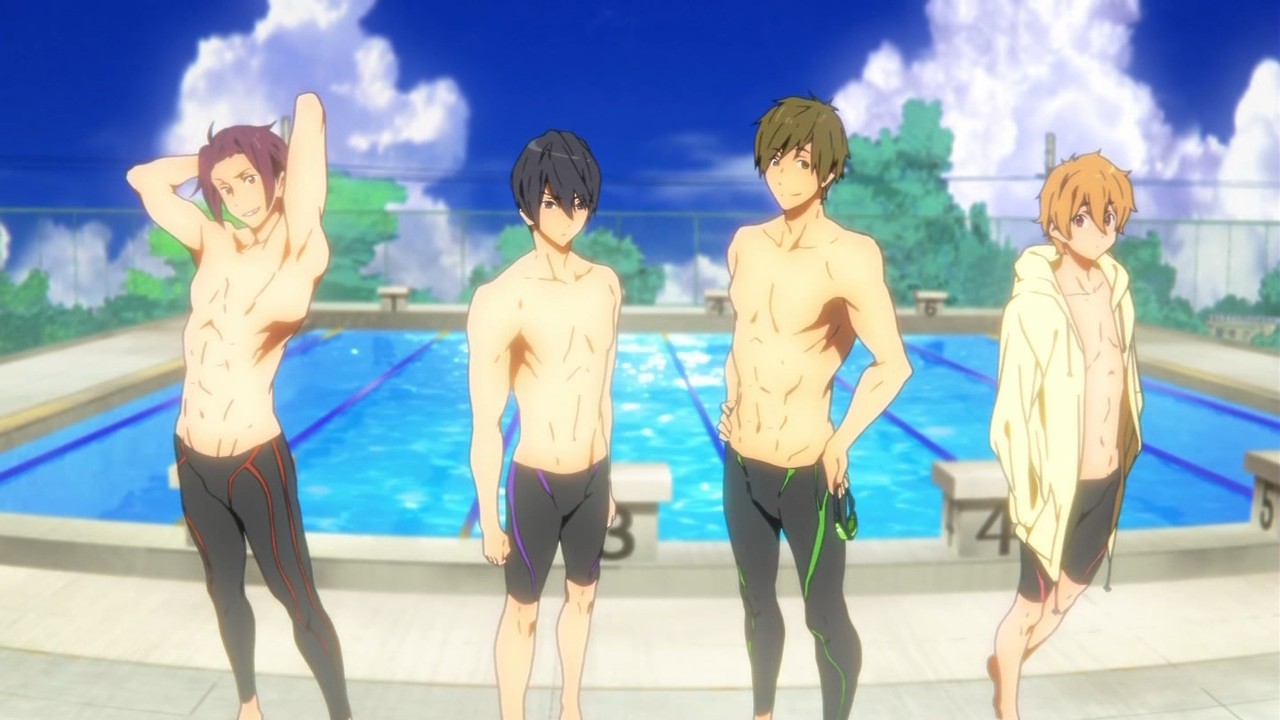
The other side feels quite the opposite, claiming that it is okay to do so because the characters are fictional and that no harm is coming to any real minors. Is sexualizing underaged characters okay simply because they are fictional? Or is it really just catering to people’s desires without having to admit to it openly? Is aging up characters in artwork done for artistic storytelling purposes or simply for exploitation?
Where Is Sexism & Exploitation In Anime?
Anime has a very long and notorious history of sexualizing underage characters, and the trend continues to this day. Though male and female characters are sexualized in many anime series, female sexualization is the most prevalent. This is not limited to underage teenage girls and, in some cases, even younger. While sexualizing minors is supposedly highly frowned upon in most societies, sexism is still a widespread problem. This doesn’t just apply to real life, but fiction also. Female characters are constantly subjected to sexual harassment, mostly by male characters, between skirt-lifting, lewd comments, or outright groping of body parts.
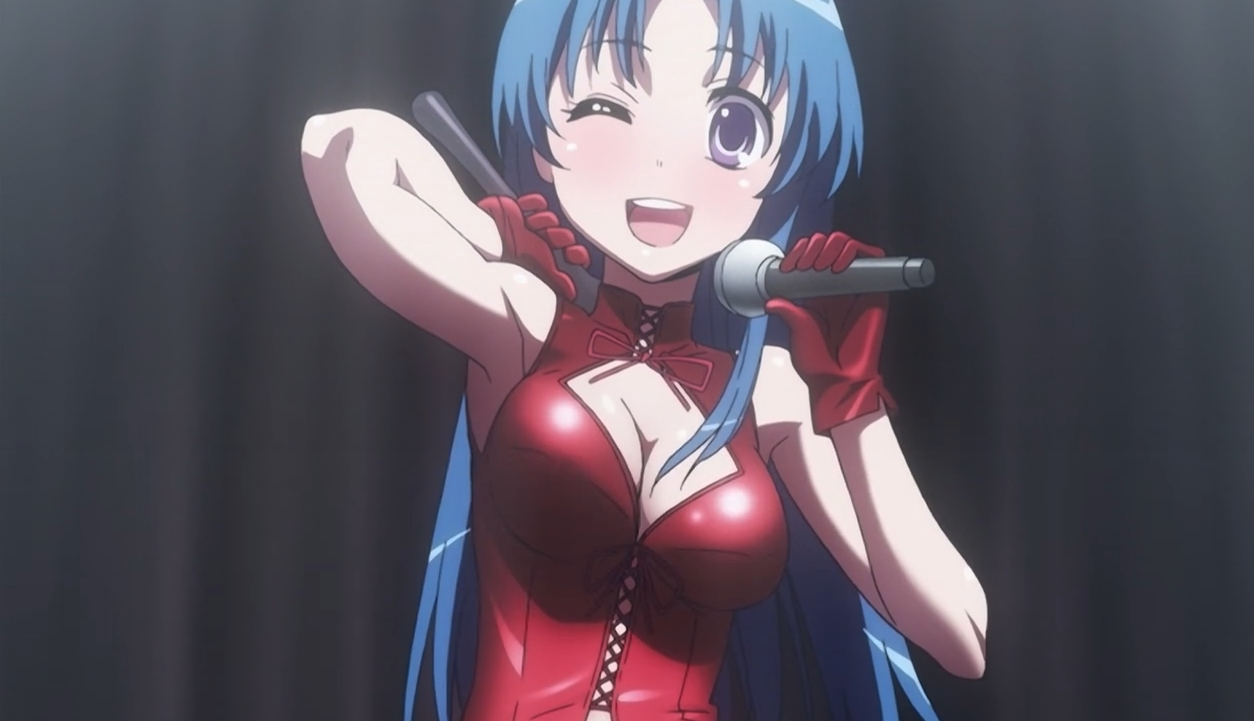
It is also clear how these actions affect the female characters, as most of them respond by either looking or sounding extremely uncomfortable or even flat out physically harming their harasser on reflex. Even in fiction young girls are portrayed as being embarrassed by the non-consensual attention, much like how one would react in real life to a catcall or non-consensual touching. It is almost as if the sexual harassment of women is used as a punchline to a joke in anime, as most instances are played off as comedic.
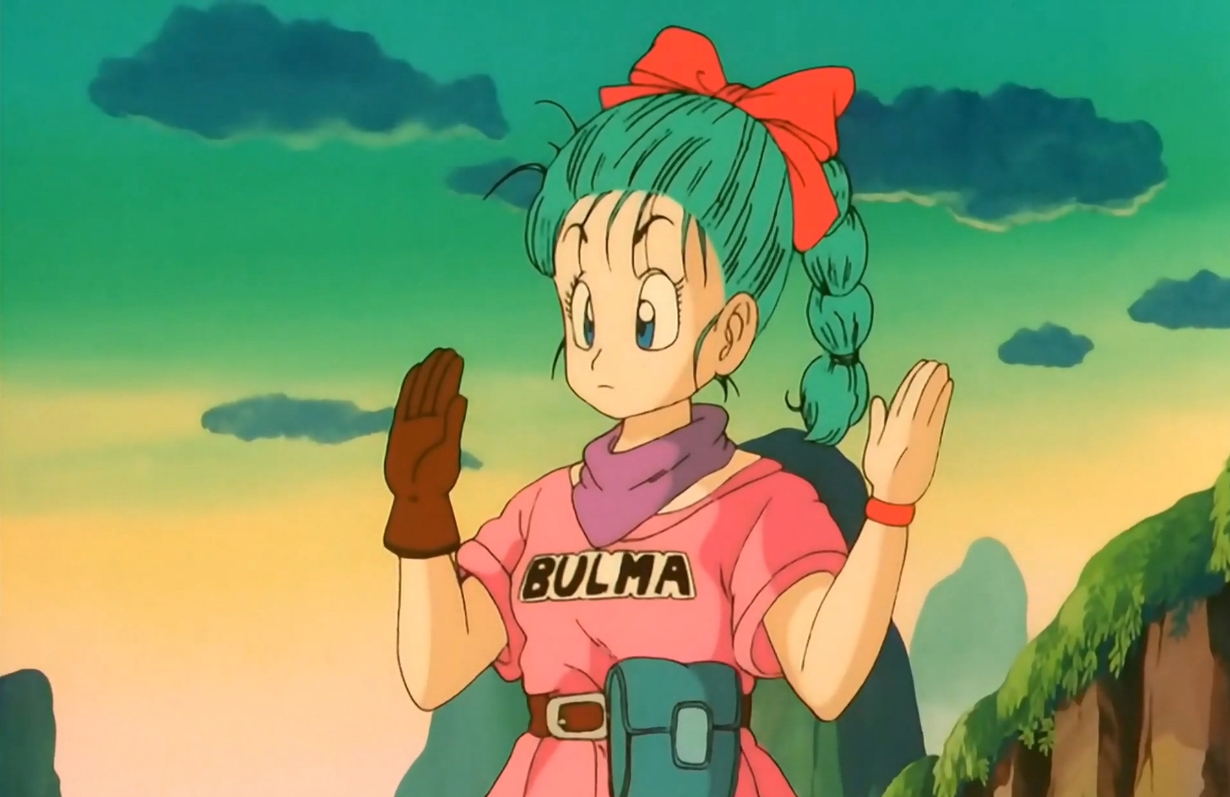
Dragon Ball holds powerful examples of this. A lovable anime that is indefinitely a cult classic, Dragon Ball is also full of many problematic elements. Bulma is constantly the subject of sexualization in the series, despite only being sixteen at the beginning of Dragon Ball. Bulma is subjected to inappropriate touching and lewd language directed towards her body. The show also illustrates her doing things like flashing Master Roshi, being naked in the shower, and wearing outfits that make her uncomfortable (the infamous bunny suit, for example). There is also a scene where her top is pulled down, and her breasts are fully exposed for a few moments. Again, Bulma is only a teenager in Dragon Ball, mostly underage.
Is There Sexualization Within Clothing?
Dragon Ball is far from being the only anime sexualizing underage teenage girls. Though most anime seems tamer these days when it comes to showing body parts, there are still many things that immensely push the boundaries. One big staple in sexualizing young girls is the clothing that teens are drawn in. A few examples of this are Kill La Kill’s Ryuko Matoi and My Hero Academia‘s Momo Yaoyorozu. Both are under eighteen years old, and both costumes are highly sexualized. Despite this, the argument is that it is okay for their outfits to look this way because there is a reason behind it. In Ryuko’s case, it is extremely relevant to the plotline of the series. In Momo’s case, her costume was made to suit her quirk.
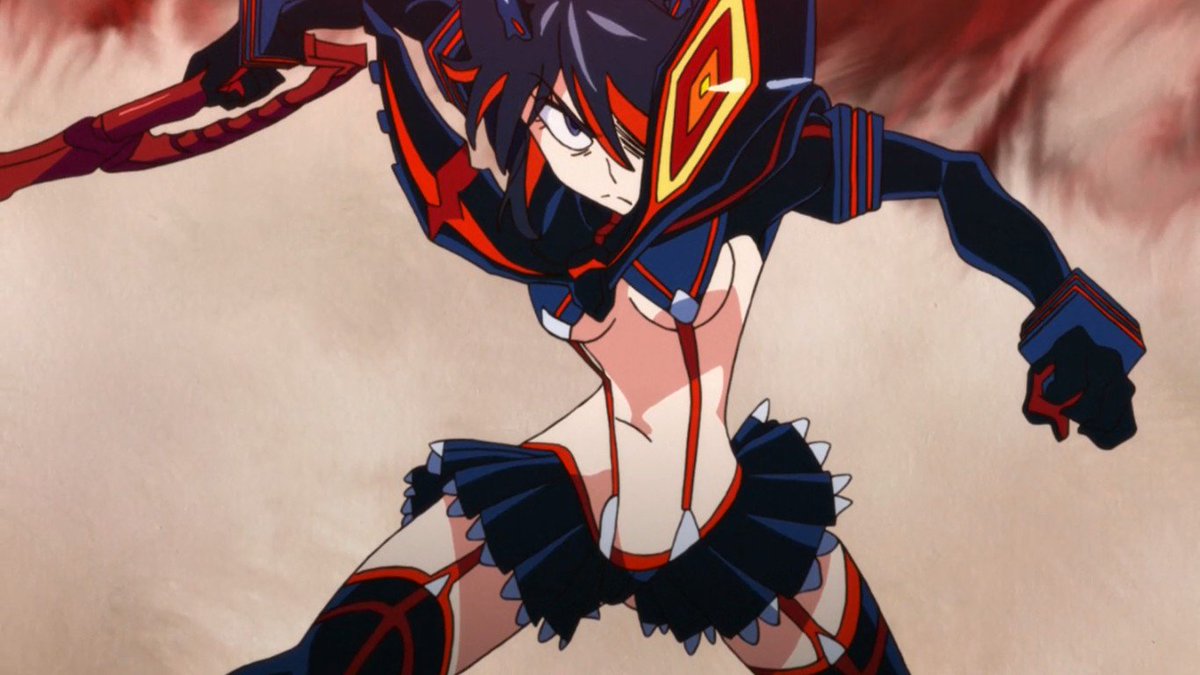
Despite these claims from the creators and their fans, it still doesn’t make for a powerful argument. Not too long ago, fans took to Tumblr to submit their own “redraws” of Yaoyorozu’s costume, with many portraying her still with exposed skin, but made in a more practical and less sexualized way. The fans themselves proved that Momo could be portrayed in a less sexual costume that could still work with her quirk (which uses her fat cells to materialize objects and pull them from her body). Many argued that Momo could still expose her skin without having to flash her breasts to use her quirk abilities.
There is nothing wrong with a woman dressing how she wants, of course. Modern-day feminist views heavily emphasize that women should not be sexualized over clothing, no matter what they choose to wear. In the United States, high school girls are often the victims of outrageous dress codes that punish girls for wearing simple clothing such as shorts and tank tops. Young women should not be reprimanded because they can be deemed distracting to boys.
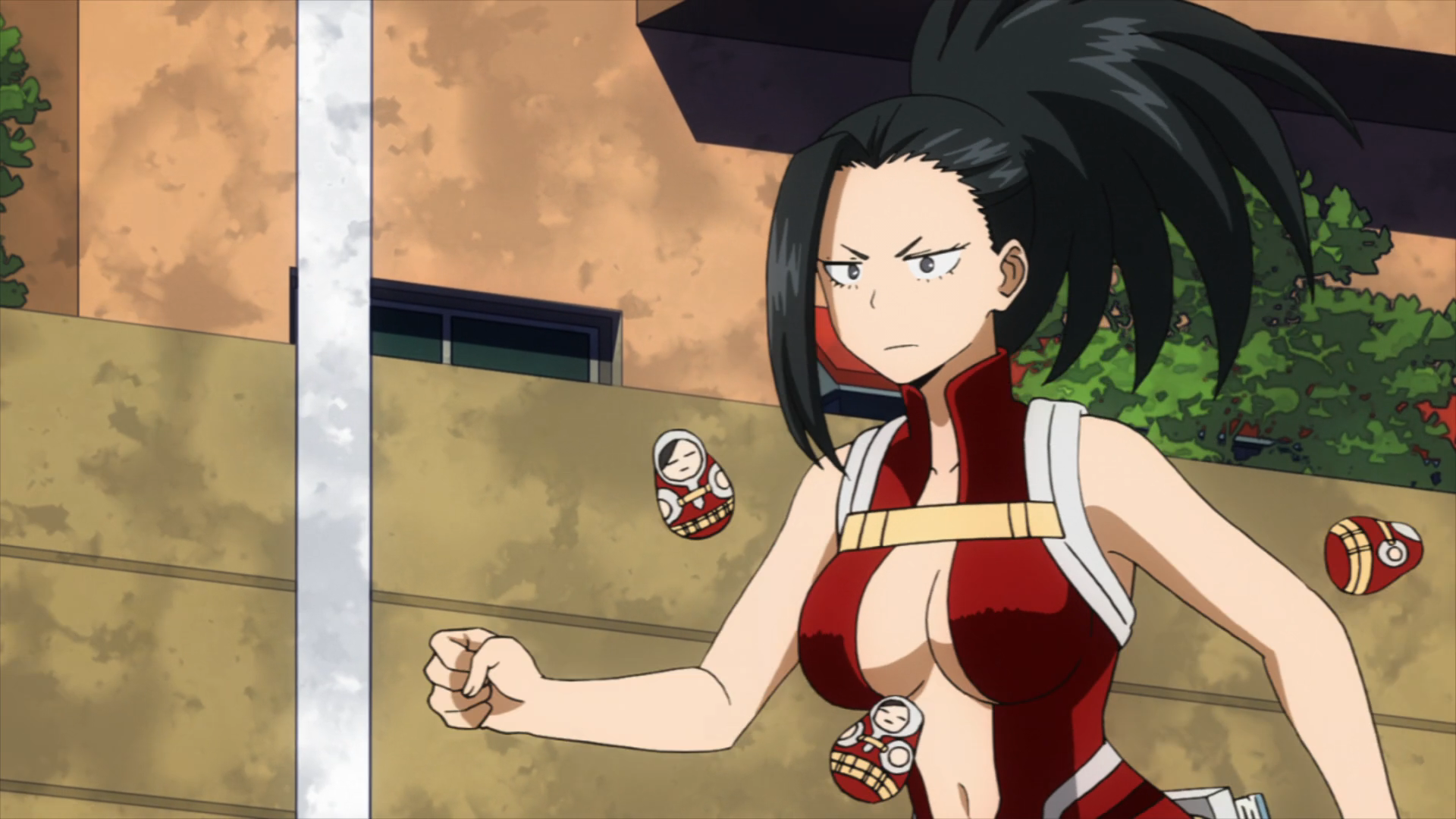
This is different in a fictional character’s case, however. They are not the ones picking out their clothing — the creator is. And though characters like Ryuko and Momo act far from promiscuous, their outfits remain overly sexualized. When an underaged character is dressed in something that is clearly made for fanservice, it does begin to raise issues.
What Is Fanservice?
Urban Dictionary describes fanservice as “scenes dedicated to excite or titillate the viewer.” (( Urban Dictionary. 2003 )). Fanservice is a common form of sexualizing characters that often goes overlooked because of its normalization in the anime subculture. Fanservice in anime is extremely common, ranging from panty shots to generous close-ups of body parts like breasts and butts.
What the character is made to wear can also contribute to fanservice as well. In My Hero Academia during the sports festival arc, there is a scene where the girls of class 1-A are dressed in very form-fitting cheerleader costumes. Not to say that cheerleader outfits alone are provocative, but the way the girls are portrayed very clearly is. They were drawn in these costumes to titillate another side of the fanbase, even though the girls from class 1-A were fifteen to sixteen at the time of the sports festival arc. The outfits were only part of the problem, as many of the girls looked very uncomfortable wearing the outfits that they were actually tricked into wearing by their creepy male classmates.
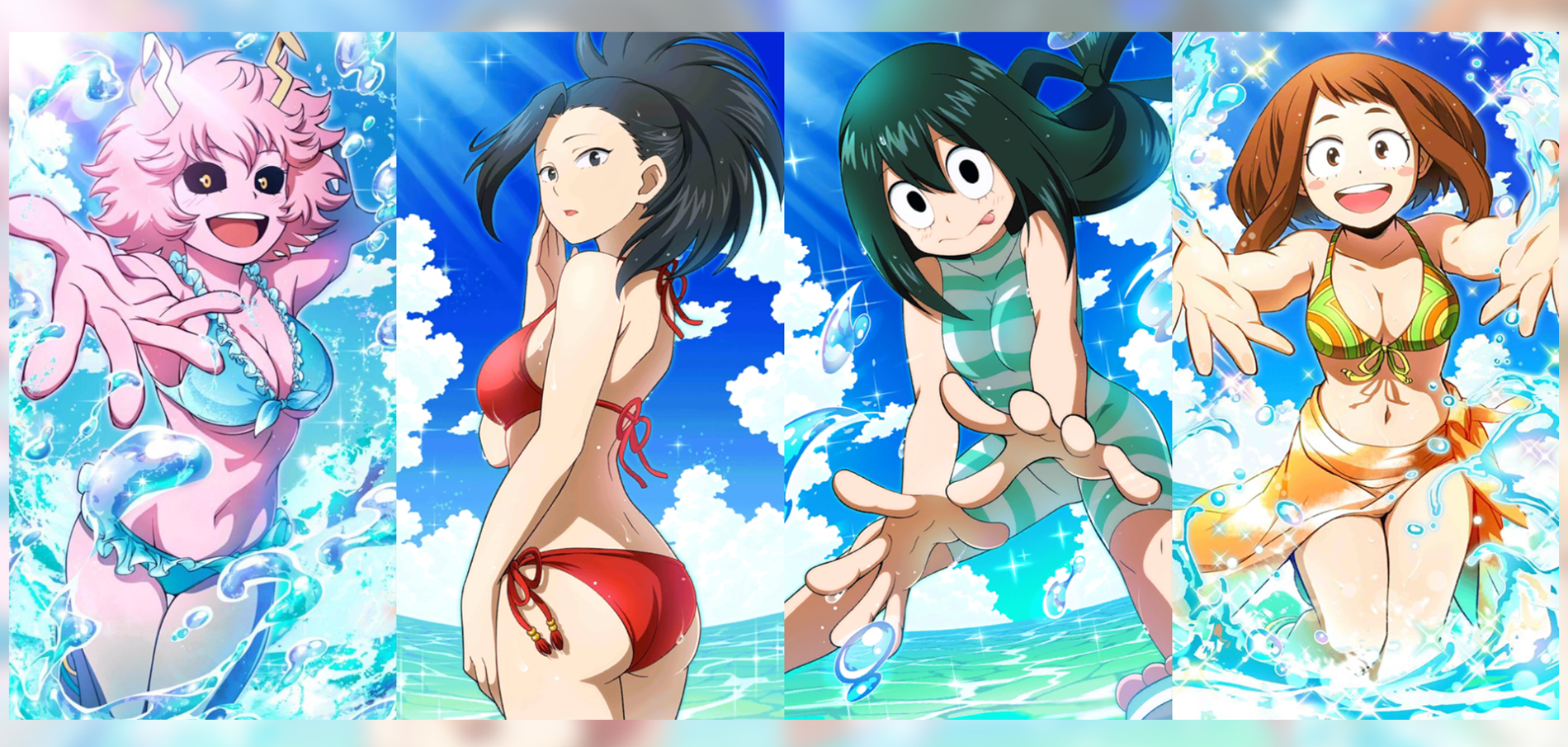
This once again goes back to sexual harassment against girls being used as a punchline in anime. This scene clearly shows the girls being highly uncomfortable yet used as comic relief because of it, followed by a few flouncy skirts and boob jiggles to appease the other “types” of fans. This shows that sexualizing young girls in anime is normalized and widely accepted as a common gag. That is not to say that fanservice does not exist for male characters by any means. In fact, sexualizing males has become much more common in anime and anime fandoms than in the past.
Has Fanservice Normalized The Sexualization Of Underaged Characters?
Though still not as prevalent as female fanservice, anime has begun to expand more on male fanservice, giving viewers more generous shots of body parts and muscles, shirtless scenes, and “boy on boy” scenes that borderline on fetishization. It isn’t just the animes in question that deliver on fanservice meant for sexualizing characters, but fans as well. Even the most innocent animes have at least some versions of fanmade fanservice behind it. Dakimakuras are a trendy item among anime fans and have even become the joke of many memes despite being so normalized. A dakimakura is a full-body pillow with a character printed on the pillowcase. The character is usually either in revealing clothing, a suggestive pose, or completely nude.
It is not hard to figure out that these dakimakuras are meant to imply something sexual, as many of these fan-made pillows portray various underage characters (both boys and girls) in suggestive clothing and poses. Right now, another popular item is the lewd mousepads, usually portraying a character’s large breasts or butt. Sexualizing underage characters though the merchandise is rarely talked about or argued against because of how embedded into anime culture it has become. Once again, several characters portrayed on these mousepads and body pillows are underage characters. Yet, it is (and has been) completely normalized within anime culture in both the east and west.
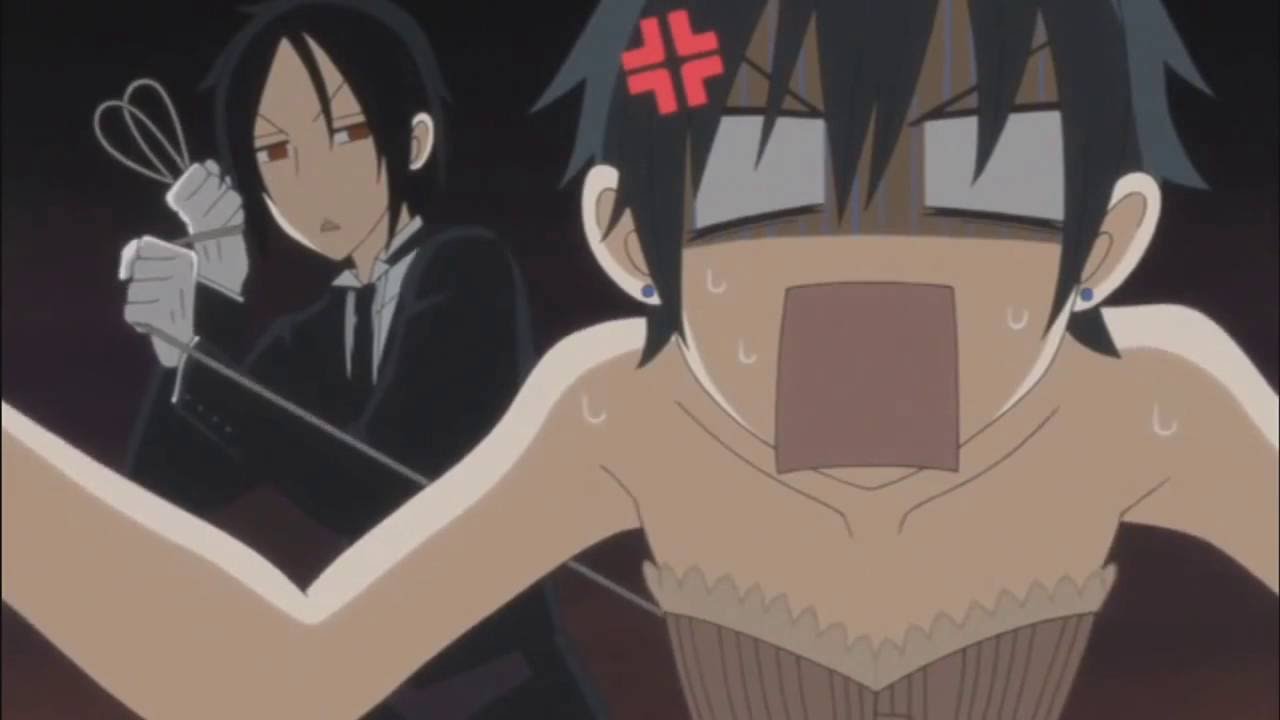
Fan-made fanservice is not limited to sold items, but many other things such as explicit fanfiction, fanart, and even cosplay. A tag that has been very popular on Twitter during October was #Kinktober, which offered a slew of lewd artwork and cosplay, many revolving around sexualizing underage characters. Once again, this is completely normalized in the anime fandom, and many who feel the opposite are beginning to speak up about it.
The Exploitation Of Aging Up & Sexualization
Though minors of different age groups are sexualized in anime, the most common age group are high school students — teenagers aged closer to eighteen. Fandoms seem to favor this group when it comes to sexualizing, and it’s almost as if there is a baseline age that people try not to cross. For example, sexualizing high school girls tends to stay within the fifteen to seventeen-year-old age group, though it isn’t uncommon to see characters even younger sexualized.
When it comes to either scenario, a popular method is used in order to portray an underaged character as older. This method is called “aging up,” and artists, writers, and cosplayers alike have used this in order to portray underage characters as young adults. This gives more freedom to portray the characters in adult situations, including sexual situations. The claim is that it is okay to be sexualizing these characters so long as they are aged up appropriately. But is aging up characters actually okay? This is a line that many people don’t like to cross, and people are either in favor of or against it.
Many accuse creators of using the aging up method just so fans can continue sexualizing underage characters, and some have even made arguments claiming that it is similar to child-grooming. On the opposite end, the argument remains the same; that these characters are not real and therefore have no thoughts on the matter. Not to mention because they are fictional they cannot be harmed. Though it may seem creepy to some, aging up may actually be the better alternative. There are factors that go into whether aging up is okay or not, under the right circumstances. There is a difference between actually aging a character up for artistic and storytelling purposes versus aging up purely for sexualizing and exploitation.
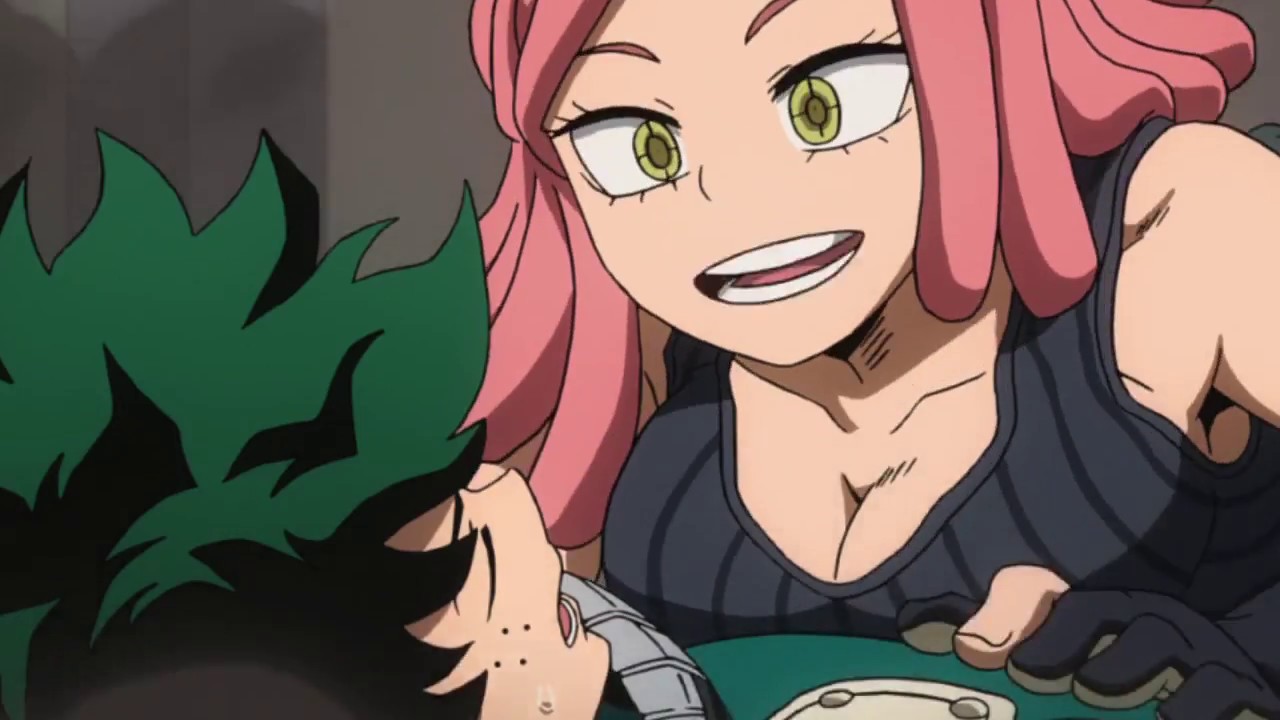
For example, one might portray a certain character aged up to tell a story of their later years as a young adult. Because they are no longer minors these characters can be represented doing common adult things, such as consuming alcohol, getting married, and being involved in sexual relationships. If the characters are sincerely aged up, there shouldn’t be much of a problem in those instances.
However, there are some who do age up characters simply to exploit them for sexual reasons. Portraying characters in lewd outfits has become a popular staple in the cosplay community, and many use the aging up method in order to simply keep sexualizing these underaged characters. Some fans will even pay money to see cosplayers sexualizing characters and portraying them in lewd outfits and sexual poses, which can definitely border on the line of exploitation.
Sexualization And It’s Effect On Underaged Fans
Fan-artists have done this as well, where characters are supposedly aged up in order to be portrayed sexually and appeal to people’s kinks. Even if this is the claim, it is hard to believe when the characters don’t even look like they have been aged up, and still look exactly the same as they did when underaged.
This is clearly exploitation and an excuse to draw minors inappropriately, giving fans more freedom to keep sexualizing them. In fact, it could be a claim that artists use to justify their actions and stay out of the crossfire. However, their artistic portrayals of these characters say otherwise. When it comes down to it, aging up can be good or bad depending on the situation. If aging up is used legitimately for more artistic freedom, it is most likely okay, because some characters do become canon adults in certain series.
If it is okay to use canon-verse aging up for more mature art and storytelling, then fan-made aging up should be fine also. It becomes a problem when these characters are purely used for sexualizing and exploited as such, and usually, the difference between the two is very clear. Creators who do only use aging up for exploitation claim that even doing that is okay, so long as they are claimed to be adults. Many on this end of the spectrum also use the fictional character argument, going back to the notion that these characters cannot be exploited or harmed because they are not real.

However if this is the case, then why do many artists and cosplayers who carry this argument still age characters up to at least eighteen? If the characters are not real and therefore have no feelings, why not just keep them underage? There is some form of unsettling feelings that jogs the moral compass (at least a little bit), that seems to make these creators still age these characters up. Or this could very well just be a claim to avoid drama. Either way, it is a very weak argument no matter which way one looks at it.
If an artist is going to portray a character as aged up, it makes sense to depict them as such. If a character is being portrayed in a sexual act and doesn’t even look like they’ve aged, it could raise questions and even concerns from younger fans. Of course one should not make assumptions about an artist, writer, or cosplayer based on what kind of content they create, but sexualizing underage characters can make others assume the worst, regardless of what the creator says about the matter. This only causes more confusion when addressing the sexualizing underaged characters and the exploitation that comes with it, especially when a lot of the criticism comes from actual underaged fans.
Does The Age Of Consent Matter?
Does the age of consent matter when it comes to sexualizing these characters? When it comes to western culture, many countries have an age of consent being between eighteen and twenty, though some states in the United States have some as low as sixteen. In Japan, the age of consent is one of the lowest in the world, set at only thirteen years old. There are stipulations to this law, however.
If there is a romantic relationship involved where the two people under eighteen, (preferably with parental approval) this low age of consent can apply. However most municipalities have laws set in place to protect youth from things like exploitation and prostitution, and therefore technically have the age for casual consensual sex set at eighteen.
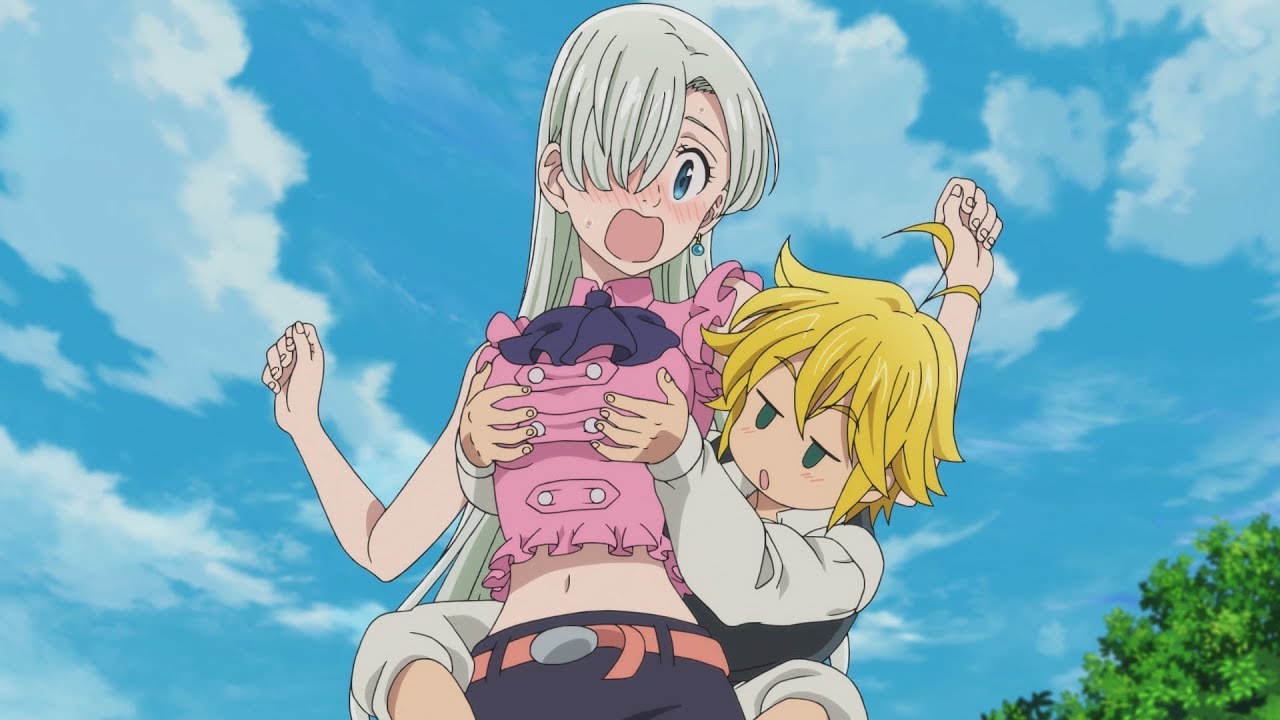
It’s uncertain as to why Japan has such a complicated law in place and actually seems like it would just be easier to set the age of consent at one age, which would most likely be eighteen as some major municipalities such as Tokyo have set. The legal smoking and drinking age is set even higher at twenty years old, so why is setting a flat age of consent so complicated? It could very well be a cultural thing that westerners don’t quite understand, but regardless of that fact, the truth remains that there is still a very large problem with sexualizing minors in anime.
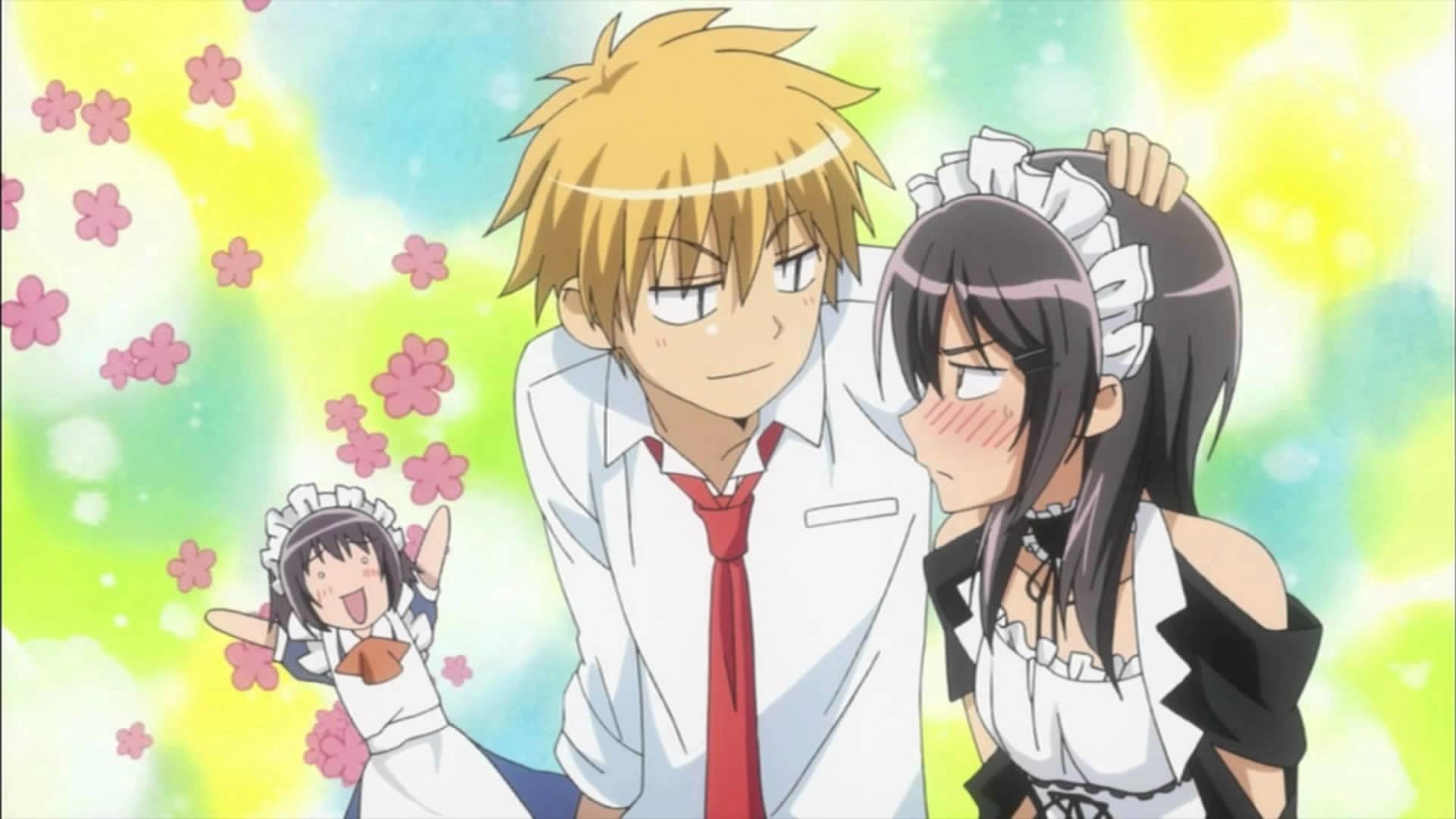
This is where the argument involving fictional characters comes in. If it’s true that fictional characters don’t have rights, is that why they are taken advantage of so much in anime and manga? Legally in most municipalities, sexualizing minors and exploitation can end in prosecution, yet manga creators are getting away with sexualizing teenagers every day. Could it be that this belief reigns true with eastern content creators? If the minor in question is fictional, does that make it okay to subject them to things like sexual harassment and clothing that is clearly meant for fetishization? Is it really considered normal to be sexualizing these underaged characters? It seems that this is so.
What Can Be The Takeaway?
Sexualizing underage characters is not okay. There are some instances where aging up characters is fine, but the method is unfortunately mostly used to keep sexualizing and exploiting minors. The issues revolving around sexualizing underage characters are very real. Characters are continuously subjected to sexism, sexual harassment, and different forms of fanservice in order to satiate the desires of adult fans, which isn’t something that should be so normalized.
When it comes to adults and sexualizing underaged characters, whether it be through cosplay, artwork, or fanfiction, there needs to be more mindfulness. When it involves a series that centers around underage characters, it is also important to remember that as there are many adult fans, there are usually an even bigger amount of younger fans, many that are also underaged teens.
When adults are constantly sexualizing underaged characters, it can make actual younger fans unsettled, and even feel unsafe in certain fandoms. Though it is true that fiction should definitely be separated from reality, there are still things that can very much influence real life and can affect people in a negative way. If an adult claims that they would never look at a real teenager in a sexual way, then they probably should do the same when it comes to fictional characters as well. With how badly minors are already exploited in anime, it only becomes part of the problem and normalizes sexism and exploitation.
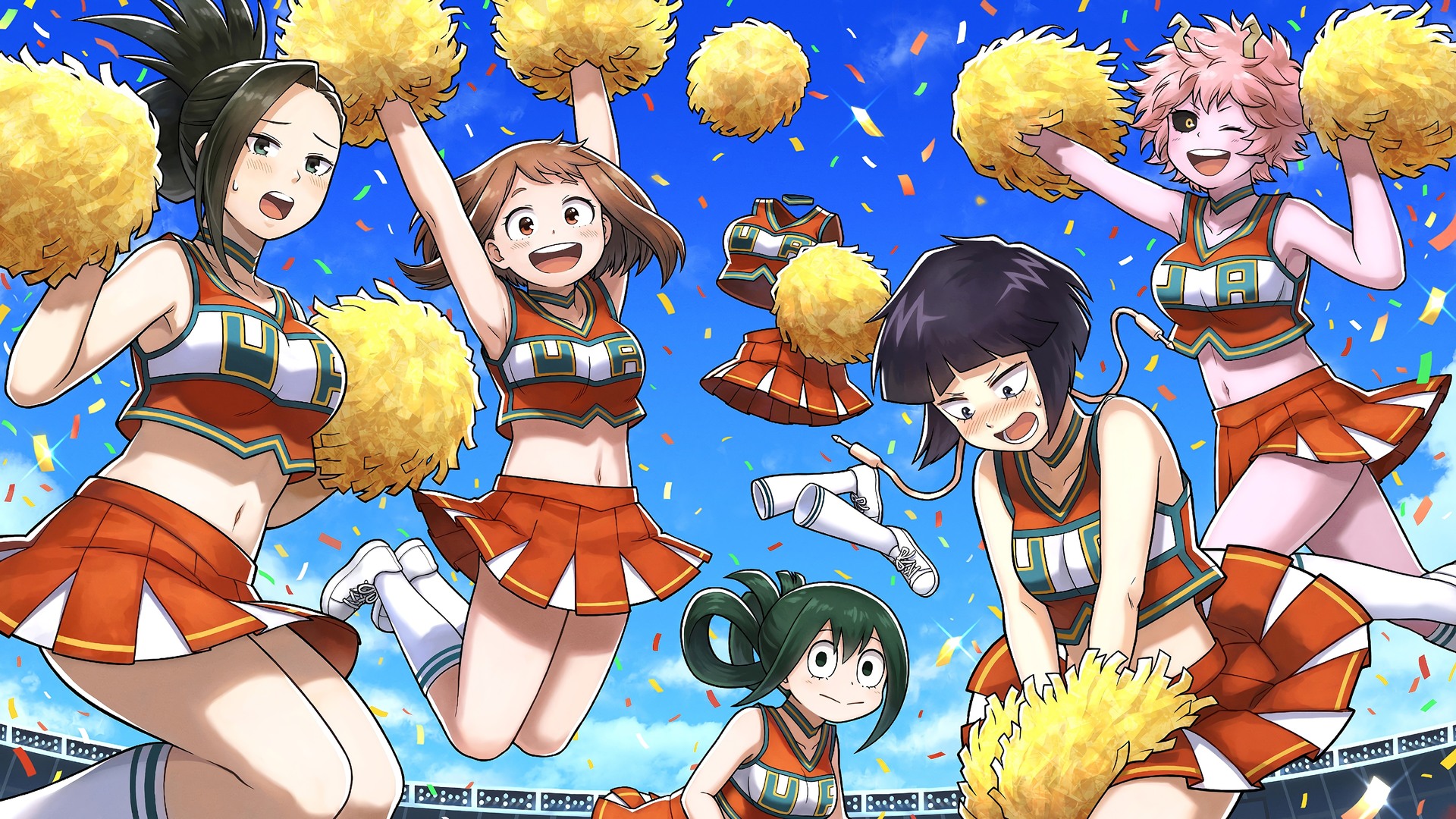
I loved this article! I too have noticed the sexualization of characters and have always thought it was strange. Initially I thought that maybe it was okay because the audience/ the age most people get into anime is around 12/13. So, for the viewers that are the same age as the characters, is it okay for them to sexualize these characters? I still don’t know the answer.